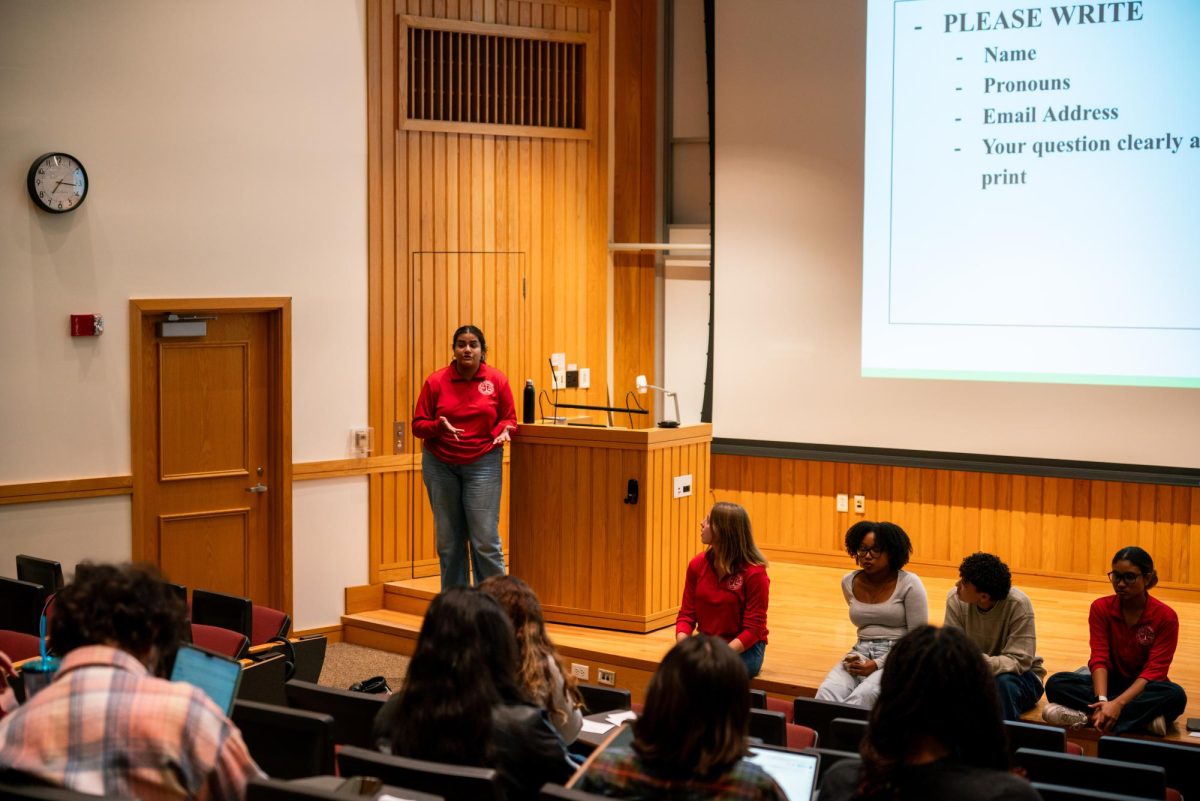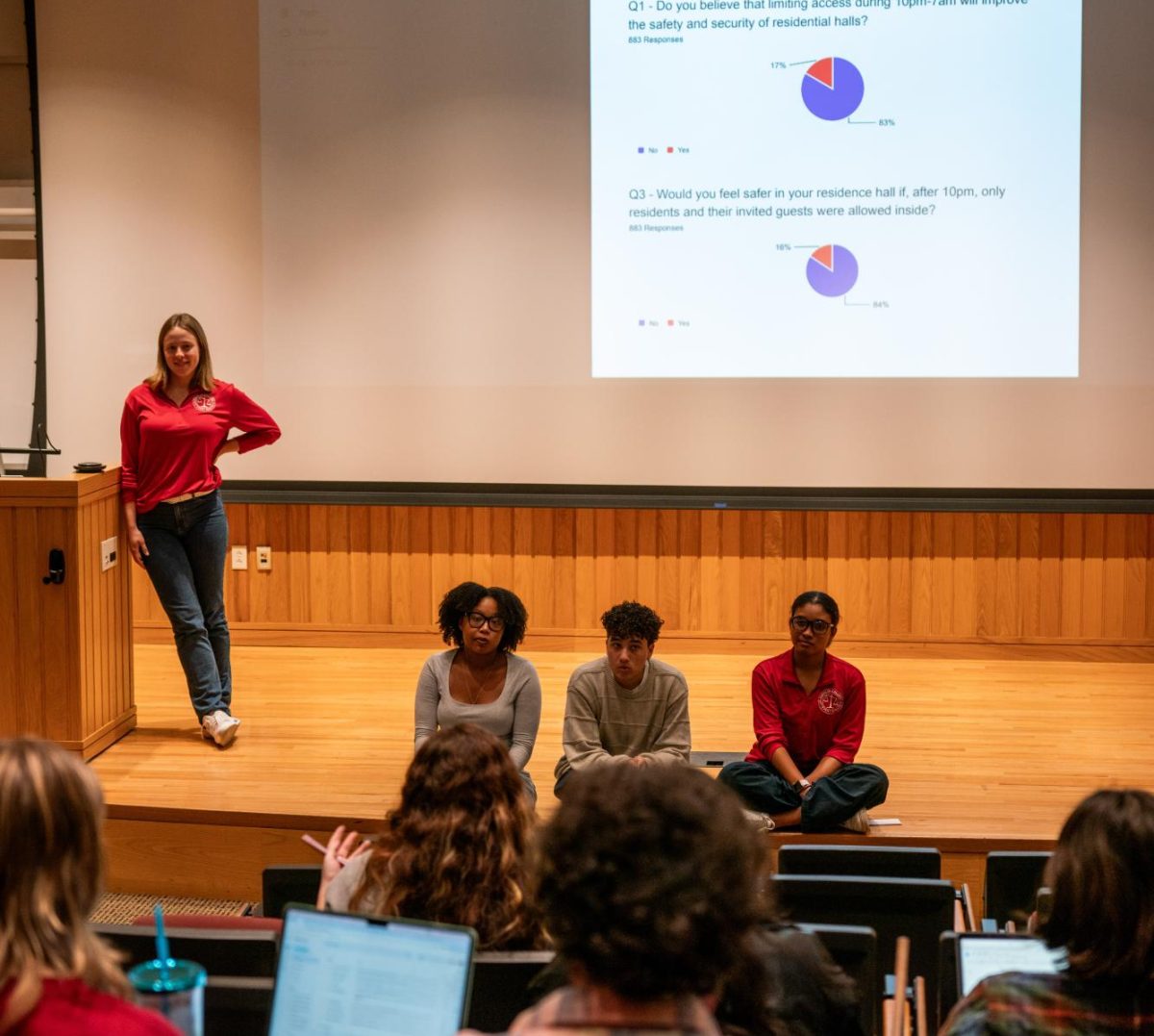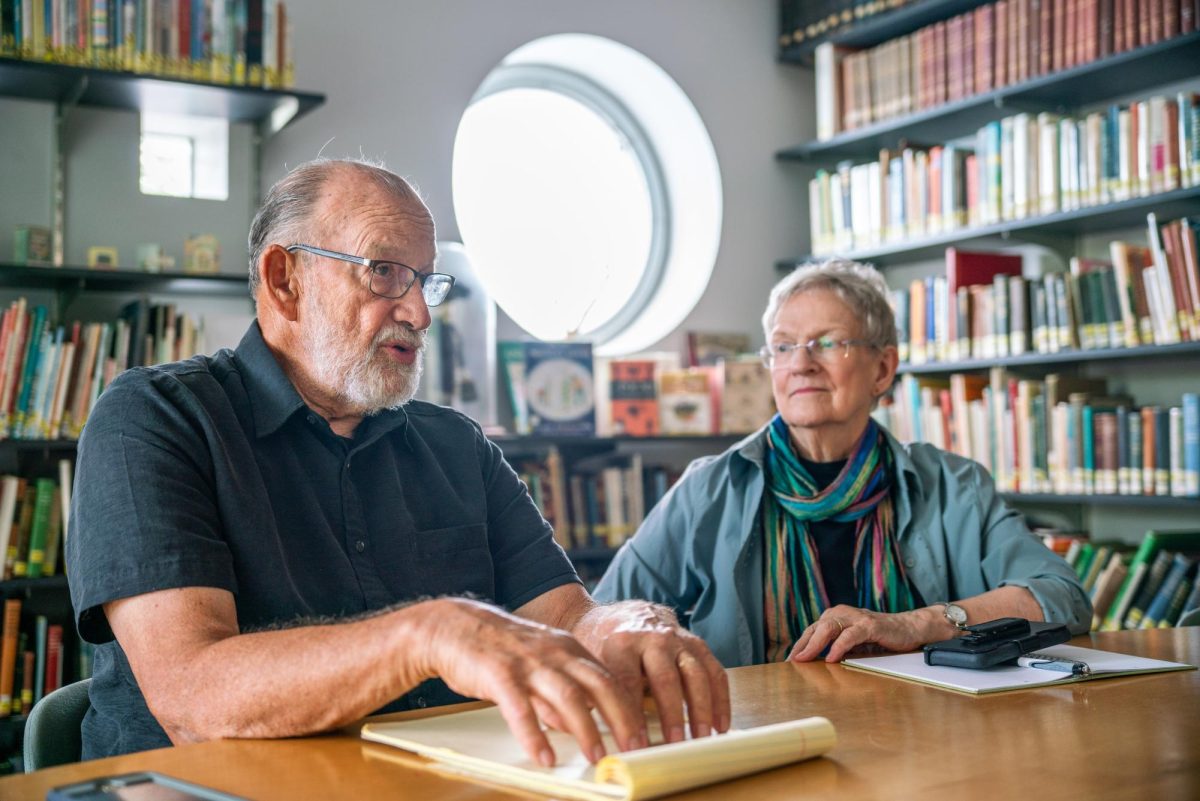On Wednesday, the League of Women Voters of Lorain County hosted a forum at the Oberlin Public Library to discuss the proposed amendments to Oberlin’s Charter, all of which will be on the ballot in the March 19 primary elections.
The amendments are part of the City’s 10-year Charter Review system, which was adopted in 1994. As part of the system, the Oberlin Charter Review Committee meets to revise the Charter and draft proposed amendments, which are then put on the ballot after a vote by the City Council.
The committee, composed of 11 members, proposed seven changes to the charter, which will appear on ballots as Issues 9 through 15. The aim of the LWVLoCo event was to explain the language and implications of the amendments and to respond to questions and concerns from members of the public.
“Several of the amendments are rather confusing, so having them better explained helped to clarify why the Charter Committee proposed the amendments,” LWVLoCo President Deb Cocco wrote in an email to the Review.
Concerns about the complicated language of the amendments were also raised by several Councilmembers at the Feb. 20 City Council meeting.
“It’s fairly legalese,” Councilmember Joe Waltzer said, referring to a document of all the amendments. “It states … how the language will be changed, or what the language will be. It doesn’t state what [the changes] came from or why the Charter Review [Committee] or the Council is proposing that this go to voters.”
Apart from the LWVLoCo event, City Law Director Jon Clark issued a memorandum explaining the proposed amendments. Clark’s memo was cited at the LWVLoCo event and can be accessed on the City website.
At the event, former City Council President Linda Slocum and former City Prosecutor Frank Carlson were the panelists, while current Prosecutor Farah Emeka acted as the moderator. The panel went through all of the issues on the ballot, with Slocum providing the benefits and Carlson providing the drawbacks of each. All three of them are also members of the Review Committee. After the panel discussion, members of the community could ask questions and raise concerns.
The most controversial amendment that will be on the Ballot is Issue 9. The amendment changes the council term from two years to four years and staggers the terms so that every two years, there will be an election, with three members being elected in one cycle and four in the next.
To handle the transition from the present system to one with staggered terms, the 2026 election will have three candidates running for two-year terms and four candidates running for four-year terms. After that election, all subsequent elections will be for four-year terms. In 2026, candidates will have to declare whether they are running for a four-year term seat or for a two-year term seat.
The amendment would also change the process of vacancies on the Council. In the event of a vacancy, the Council will appoint a replacement within 60 days, who will serve the remainder of the unexpired term or until a successor has been elected at the next municipal election — whichever comes first.
Lastly, the amendment takes up the issue of salaries. If staggered terms are introduced, members of the Council will be serving different terms. To ensure that no one can vote on a salary increase that would take effect during their term of office, salary increases will only go into effect for the succeeding term of each Councilmember. The amendment will now also allow salary increases to be issued by ordinance instead of by motion.
The main benefit accrued by the amendment, Slocum said, is the continuity of institutional memory in the Council. Furthermore, she posited that the longer terms would not dissuade people from running for Council, as many members serve multiple terms in the present system. Responding to the argument that this system makes it harder to remove City Councilmembers who are not doing their jobs, she argued that members can still be removed by other processes. It would also cut down on election costs as Councilmembers would be running for reelection less often. Finally, she argued that many other municipalities also have staggered terms that are longer than four years.
Carlson made several arguments against the amendment. Firstly, he pointed out that more frequent elections would keep members more accountable, as it would give the public an opportunity to vote members out more often. He said that he was skeptical of the argument that members would still need to do a good job for fear of being removed by other means, pointing out that the removal of a member outside of an election is extremely hard. He then said that in the election cycle, with three Councilmembers up for election, the public does not get a chance to elect a majority on the Council. He further said that another committee member argued that younger people might be dissuaded from running because they would have to serve a longer term. Finally, Carlson argued that if large bodies like the U.S. House of Representatives can have two-year terms, then the City Council can, too.
Most of the other amendments do not majorly change the Charter and only clarify language or update the language to reflect current practice.
Issue 10 amends Section III(F) of the Charter to delete its last clause. The clause referred to members of the public being able to “hear and observe” the deliberations of the City Council; this caused issues at the start of the COVID-19 pandemic when it was unclear if virtual meetings of the Council would violate this clause. According to Slocum, the deletion will allow for more flexibility in how the Council meets in an exigent circumstance.
Issue 11 deals with Section VII and clarifies that permanent departments of the City are to be created by ordinance and temporary departments can be created by motions.
Issue 12 adds wording to Section IX(C)(9) to clarify that proposed legislation that fails to garner four votes on its first or second reading need not be brought up again for further readings. The legislation can, in that case, be reintroduced in the future. This change, according to Jon Clark, simply solidifies current practice.
Frank Carlson brought no objections to these three Issues and told attendees that the Charter Review Committee was united among these, with no significant dissents.
Issue 13 was more contentious. It amends Section X and changes the procedure for emergency motions. Crucially, it deletes the term emergency from the section. Taking an article on an emergency basis currently waives the requirement for three readings, and the article will go into immediate effect on passage instead of taking effect after the regularly required 30 days. The amendment proposes that these resolutions shall now be termed as going into “immediate effect.” If at least five votes of the council are not achieved, then the immediate effect language is removed from the article, and it has to follow the regular process for passage.
According to Slocum, the term “emergency” is misleading as several ordinances are passed as emergency resolutions so that they go into immediate effect, even though the ordinances do not deal with situations that would ordinarily be termed as emergencies.
Carlson raised the concern that ordinances passed as emergency measures — or, if the Issue passes, those that go into “immediate effect” — take away citizen’s rights to referendums and that removing the weight of the term “emergency” would encourage such passages. In normal ordinances, citizens can start a petition between an ordinance’s passage and the time when it goes into effect; the issue would then go on the ballot for a referendum. Any emergency ordinance takes immediate effect and does not allow for this Right of Referendum. Issue 14 amends the powers of the City Manager as laid out in Section XIV. The annual reports on the City’s finances and financial situation would now be made by the Finance Director rather than the City Manager. The City Manager, if the amendment passes, would be able to serve on boards and commissions if directed by law or by the Council.
Issue 15 allows for the Council to make changes to Civil Service rules that conflict with Ohio State Law. According to the Constitution of the State of Ohio, in the case that the City rule and State Law conflict — and that the rule is made by a Chartered City whose Charter allows for conflicts — the City’s rule will supersede the state law. Carlson, again, did not have any opposition to these two amendments.
Councilmembers expressed appreciation for the event and how it helped to educate members of the public.
“Especially with the issues … which were even more confusing in some way, I think they … did a great job of trying to represent both sides, allowing people to ask the questions they want to ask,” Councilmember Jessa New said. “It was difficult … although I think we got a lot out of it.”
LWVLoCo President Deb Cocco agreed that the event was a success.
“My hope is that the voters took away more knowledge about the changes being proposed and could better decide how to vote on each of them and what would happen if the various amendments passed or failed,” she wrote in an email to the Review. “I did have people thanking us for putting on the panel. They indicated it helped to make their choices clearer.”









